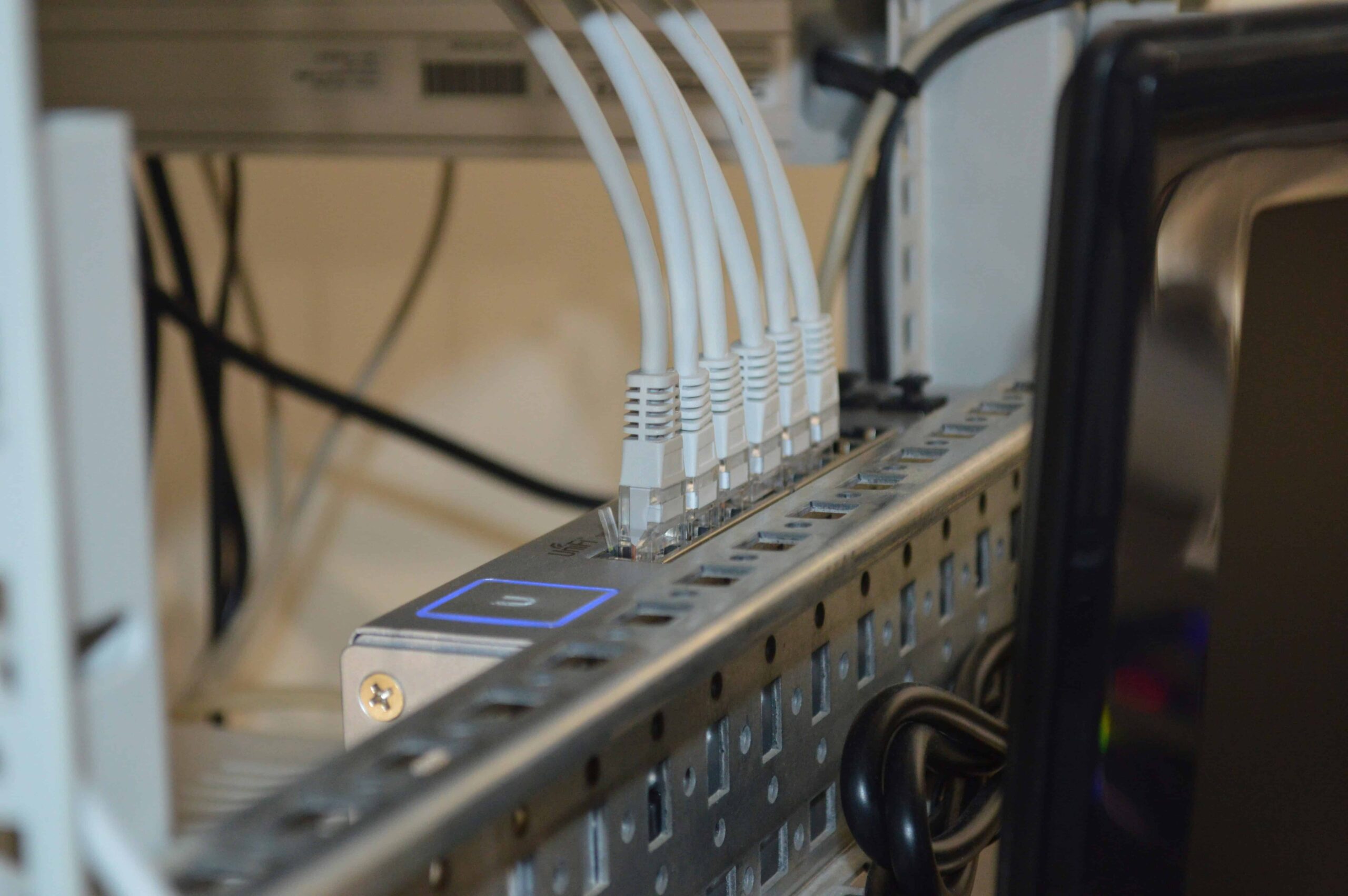1. Introduction
Reliable internet is essential for remote work because it directly impacts productivity, communication, and workflow. The best internet options for working remotely should offer a stable connection that enables smooth video conferencing, fast file uploads, and uninterrupted access to cloud-based tools—all crucial for effective remote collaboration.
According to a recent survey by Pew Research on internet use, over 40% of remote workers report that slow or unstable connections hinder their ability to collaborate effectively. Additionally, data from Statista shows that average internet data consumption per household increased by 30% in the last two years, reflecting the growing demands on bandwidth from remote work and other activities.

When choosing the best internet for working remotely, factors like internet speed, latency, and data limits play a significant role in productivity.
- Internet Speed: High download and upload speeds are essential for remote work, especially if tasks include video conferencing, large file transfers, or using bandwidth-heavy applications. For most remote workers, a minimum speed of 25 Mbps is recommended, but higher speeds improve performance, especially in households with multiple users.
- Latency: This is the delay between sending a request and receiving a response. Low latency is vital for activities like real-time video calls or online collaboration, where delays can disrupt communication. Fiber and cable internet generally offer lower latency compared to satellite, making them better suited for remote work.
- Data Limits: Many providers cap monthly data usage, which can be a constraint for remote workers who rely heavily on video conferencing or large data transfers. Plans with high or unlimited data ensure a consistent connection without throttling or extra fees.
Considering these factors ensures that remote workers have a reliable connection, leading to smoother workflow and fewer interruptions during important tasks.
2. Types of Internet Connections for Remote Work
When considering the best internet for working remotely, it’s essential to understand the various types of connections and their suitability for remote work tasks. Here’s an overview of common internet options:
1. Fiber Internet
- Benefits: Fiber-optic internet is widely considered the best option for remote work due to its high speeds (often reaching 1 Gbps or more) and extremely low latency. This is especially valuable for video calls, cloud-based applications, and large file transfers, which require stable, high-speed connections.
- Ideal For: Remote workers who need consistent, high-speed internet with minimal lag for activities like HD video conferencing and quick file uploads.
- Drawbacks: Availability can be limited in rural areas, as fiber infrastructure is still expanding, primarily in urban and suburban areas.
2. Cable Internet
- Benefits: Cable internet is a widely accessible option that provides relatively high and stable speeds, typically ranging from 25 Mbps to 1 Gbps. It is sufficient for most remote tasks, including video conferencing and handling moderate data use.
- Ideal For: Most remote workers who need reliable internet without the higher costs of fiber, especially in areas where fiber isn’t available.
- Drawbacks: Cable internet speeds can slow during peak hours if multiple users in the area are online, which may affect performance.
3. 4G/5G Home Internet
- Benefits: 4G and 5G home internet are mobile-based alternatives suitable for urban areas where fiber or cable connections might be limited. 5G, in particular, offers fast speeds and low latency similar to fiber, making it a strong option for remote work tasks like video calling and cloud access.
- Ideal For: Urban remote workers needing flexibility or those in locations where traditional broadband isn’t available. It’s also useful as a backup connection.
- Drawbacks: 4G speeds may not be sufficient for heavy internet use, and both options may have data limits depending on the provider.
4. DSL and Satellite Internet
- DSL: DSL is an option for remote areas but often has lower speeds (1–100 Mbps) and less stability than fiber or cable. It’s suitable for basic remote tasks like email and web browsing but may struggle with video conferencing or large file transfers.
- Satellite: Satellite internet is typically a last resort due to its high latency, which can impact real-time communication. However, with options like Starlink offering speeds up to 150 Mbps, satellite can still be viable for remote workers in very rural or remote areas.
- Drawbacks: High latency in satellite internet can disrupt video calls, and many plans come with data caps, making them less ideal for data-heavy tasks.
Understanding these internet types helps remote workers choose the best connection based on their location, budget, and specific work needs.
3. Choosing the Right Speed for Your Work Requirements
Choosing the right internet speed for remote work depends on the tasks you perform and the number of devices connected to your network. Here’s a breakdown of the recommended speeds for various remote work requirements:
1. Basic Needs (10–25 Mbps)
- For essential tasks like browsing, emailing, and accessing cloud-based documents, an internet speed between 10–25 Mbps is usually sufficient. This range allows smooth page loading and general online work without buffering.
- Recommended For: Light remote work tasks without heavy video usage, ideal for single users who only need to access websites, emails, or simple applications.
2. Video Conferencing (3–5 Mbps Upload)
- For smooth, HD-quality video conferencing on platforms like Zoom or Skype, aim for at least 3–5 Mbps upload speed per call. HD video requires consistent bandwidth, as even minor lags can disrupt communication.
- Recommended For: Regular video calls, especially important for remote workers who need to present or interact frequently in meetings.
3. Heavy File Sharing (25+ Mbps Download, 10+ Mbps Upload)
- For jobs that involve uploading and downloading large files (such as design, video editing, or data analysis), speeds of 25 Mbps download and 10 Mbps upload or higher ensure smooth, uninterrupted transfers. Faster speeds allow quicker handling of high-resolution media or data-heavy files, saving time and reducing frustration.
- Recommended For: Work requiring frequent file exchanges, such as multimedia creation or large data sets, where delays in uploads or downloads can impact productivity.
4. Multi-Device Use (100+ Mbps)
- In households where multiple people share the internet or have multiple devices connected, speeds of 100 Mbps or higher are recommended to avoid slowdowns. This allows several devices to stream, work, and connect simultaneously without affecting each other’s performance.
- Recommended For: Homes with multiple remote workers or students, or for workers using multiple devices (e.g., laptop, phone, and tablet) at the same time.
Selecting the right speed based on these requirements helps ensure a productive remote work environment, preventing issues like buffering, lag, and slow downloads.
4. Recommended Internet Providers for Remote Work
Here’s a summary of top internet providers by connection type, with cost considerations and data caps:
| Provider Type | Top Providers | Starting Price (Approx.) | Typical Speeds | Data Caps | Best For |
|---|---|---|---|---|---|
| Fiber | AT&T Fiber, Google Fiber | $55–$70/month | Up to 1 Gbps | Unlimited | High-speed, low-latency needs like video conferencing and large file transfers |
| Cable | Xfinity, Spectrum | $45–$60/month | 100 Mbps–1 Gbps | 1.2 TB (Xfinity), Unlimited (Spectrum) | Reliable and accessible, good for most remote work tasks |
| 5G Home Internet | T-Mobile, Verizon | $50–$70/month | 100–300 Mbps | Unlimited | Flexible, fast mobile internet in urban areas without fiber access |
| Satellite | Starlink | $90–$120/month | 50–150 Mbps | Unlimited | Rural areas with no other broadband options, not ideal for latency-sensitive tasks like video calls |
Provider-Specific Considerations:
- Fiber Providers (AT&T Fiber, Google Fiber): Offer some of the fastest and most reliable internet speeds, often with no data caps, making them ideal for heavy internet users or households with multiple remote workers.
- Cable Providers (Xfinity, Spectrum): Generally accessible in suburban and urban areas, providing stable and high-speed options. Xfinity includes data caps (1.2 TB) with overage fees, whereas Spectrum offers unlimited data in most areas.
- 5G Home Internet (T-Mobile, Verizon): Mobile-based internet suitable for remote work in well-served urban areas, providing decent speeds and flexibility without data caps.
- Satellite (Starlink): A reliable choice for remote or rural areas where other connections aren’t available. However, latency can be high, which may not work well for tasks requiring real-time interactions.
Each provider’s suitability depends on location, data needs, and remote work requirements, so consider these factors when choosing the best internet for working remotely.
5. Data Needs for Remote Work
Estimating monthly data needs for remote work can help ensure you avoid slowdowns or additional charges if your internet plan includes data caps. Here’s a breakdown of average data usage for common remote work activities:
- Video Conferencing: For HD-quality meetings on platforms like Zoom, Google Meet, or Microsoft Teams, expect to use approximately 2.4 GB per hour. For remote workers attending around 50 hours of video calls per month, this amounts to about 120 GB. Regular HD meetings for a typical work month could easily reach 300 GB.
- File Uploads/Downloads: The amount of data used for uploading and downloading varies widely depending on the type of files. Document transfers are relatively small, while large files like video and graphic assets consume much more data. For heavy use, including frequent large file exchanges, it’s advisable to plan for at least 600 GB per month.
- General Browsing and Emails: These activities use minimal data, around 1–2 GB per day, so for a full work month, general browsing would typically use around 30–60 GB.
- Cloud-Based Tools and Software Updates: Cloud tools like Google Workspace, Slack, and Microsoft Office consume around 5–10 GB per month depending on usage. Occasional software updates might add another 5–10 GB.
Total Estimated Data for Remote Work
For a comprehensive remote work setup that includes HD video meetings, frequent file sharing, and daily browsing, a recommended monthly data allowance would be 1 TB or higher. This ensures enough bandwidth to handle heavy use without interruptions, even in data-capped plans.
Choosing an internet plan with an appropriate data cap or an unlimited data option can help you avoid overage fees and maintain productivity in remote work.
6. Improving Internet Stability
For remote work, a stable internet connection is essential to avoid disruptions. Here are some tips to ensure reliable connectivity:
Use Wi-Fi Extenders or Mesh Networks: In larger spaces or homes with thick walls, Wi-Fi extenders or mesh systems can help distribute the signal more evenly, reducing dead zones and maintaining stable speeds throughout your workspace.
Use a Wired Ethernet Connection: Connecting directly via Ethernet instead of Wi-Fi provides a more stable and faster internet connection, which is especially helpful for video conferencing and large file transfers.
Optimize Router Placement: Place your router in a central location, elevated and away from obstructions, to ensure the Wi-Fi signal reaches all areas effectively. Avoid placing it near metal objects or electronic devices, which can interfere with signal strength.
Enable Quality of Service (QoS) Settings: Many modern routers include QoS settings that allow you to prioritize work devices. This feature directs more bandwidth to selected devices (like your laptop) and reduces bandwidth for non-essential devices, ensuring smoother performance during work tasks.
7. Budget-Friendly Tips
Saving on internet costs without sacrificing connectivity can be achieved with a few strategies:
- Bundle Internet and Mobile Plans: Many providers offer discounted bundles if you combine internet and mobile services. This can reduce monthly costs and sometimes includes added benefits like higher data limits.
- Opt for Prepaid Hotspot Data Plans: If your remote work is occasional, consider prepaid mobile hotspot plans. These allow you to pay only when you need connectivity, making them a flexible, cost-effective solution.
- Adjust Speed Tiers Based on Usage: If you don’t require high speeds for video conferencing or heavy data use, consider lower-tier internet plans. Many providers offer variable-speed options, so you can choose a plan that matches your work needs without overpaying.
8. Conclusion
In summary, choosing the best internet for working remotely requires careful consideration of speed, latency, and data requirements tailored to your work tasks. A reliable connection reduces disruptions, boosting productivity and job satisfaction. For more detailed guidance on choosing the right internet for remote work, check out our in-depth guide here: The Best Internet for Remote Work: A Comprehensive Guide.



